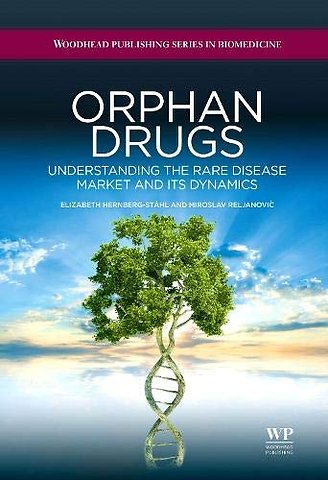<p>List of figures and tables</p> <p>Acknowledgements</p> <p>About the authors</p> <p>Chapter 1: Introduction</p> <p>Chapter 2: Orphan drugs and orphan drug legislation</p> <p>Abstract:</p> <p>1.1 The history of orphan drug legislation</p> <p>1.2 Legislation and the definition of orphan disease in different countries</p> <p>1.3 Current state of the art: number of designations and approvals</p> <p>1.4 Players on the market</p> <p>1.5 Contribution made by orphan drug legislation</p> <p>1.6 Procedure: orphan drug designation and marketing authorisation approval</p> <p>1.7 External links and sources of further information</p> <p>Chapter 3: Characteristics of rare diseases</p> <p>Abstract:</p> <p>2.1 Definition of rare diseases, prevalence, incidence and coverage by the International Classification of Diseases (ICD)</p> <p>2.2 Characteristics of rare diseases, genetics and underlying causes</p> <p>2.3 Common problems encountered with rare diseases</p> <p>2.4 Patient care, management and counselling</p> <p>2.5 Examples of rare diseases</p> <p>2.6 Public awareness and disease support groups</p> <p>2.7 Resources and external links</p> <p>Chapter 4: Patient network and advocacy groups</p> <p>Abstract:</p> <p>3.1 Patient empowerment through international institutions: WHO and EU</p> <p>3.2 The role of patient organisations and advocacy groups: the needs, strategies, objectives and achievements</p> <p>3.3 Patients and research: patients’ engagement and empowerment within rare diseases</p> <p>3.4 Umbrella organisations: EURORDIS and NORD</p> <p>3.5 National European organisations</p> <p>3.6 Other organisations working in the Americas</p> <p>3.7 Organisations working in Africa, Asia and Australasia</p> <p>3.8 Other patient alliances</p> <p>3.9 Organisations dedicated to a specific disease</p> <p>3.10 Virtual health communities</p> <p>Chapter 5: Organisations and networks dedicated to rare diseases and orphan drugs</p> <p>Abstract:</p> <p>4.1 Organisations and networks: their roles and activities</p> <p>4.2 European organisations and networks</p> <p>4.3 American organisations and networks</p> <p>4.4 International organisations and networks</p> <p>Chapter 6: Policies and research funding</p> <p>Abstract:</p> <p>5.1 Policies on rare diseases</p> <p>5.2 Research funding in the European Union (EU)</p> <p>5.3 Research funding in the USA</p> <p>5.4 Collaborative activities and joint funding</p> <p>5.5 External links and sources of further information</p> <p>Chapter 7: Designing robust clinical trials for orphan drugs</p> <p>Abstract:</p> <p>6.1 Review of hurdles and implications for study design</p> <p>6.2 Finding relevant study endpoints</p> <p>6.3 Sample size and demonstration of superiority for market approval and HTA evaluation</p> <p>6.4 The need for long-term collaborative effort in collecting real-world safety and effectiveness data</p> <p>6.5 Notes</p> <p>Chapter 8: Market access procedures for orphan drugs</p> <p>Abstract:</p> <p>7.1 What is meant by market – or patient – access?</p> <p>7.2 Market approval versus market access</p> <p>7.3 Differences in access procedures for orphan drugs by country</p> <p>7.4 Availability and access to orphan drugs</p> <p>7.5 Difficulties in estimating the value of treatment</p> <p>7.6 Differences in patient access schemes and patient registries</p> <p>7.7 Patient involvement in HTA</p> <p>7.8 Compassionate use (expanded access)</p> <p>Index</p>

